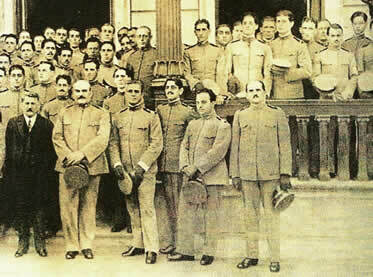THE Battle of the Marne, occurred in September 1914, was decisive for the start of trench warfare on the western front in World War I. The fact that the French forces, supported by the British, managed to contain the German offensive frustrated the expectation of a rapid German advance into French territory.
Inserted in the first phase of the First World War, the war of movement, the Battle of the Marne was one of the battles carried out by the Germans to put into practice the Schilieffen Plan. With this plan drawn up in 1905, the Germans intended to quickly conquer French territory, west of Germany, and, according to projections, within six weeks they would be able to conquer Paris. With the rapid conquest of France, the Germans could later devote themselves to fighting the Russian troops, who according to German calculations would need six weeks to prepare at the front East.
The onslaught would require most of the troops on this western front, seeking to attack the French army after its rapid passage through Belgian territory. At the same time as this displacement would take place, attacks on the French fortifications would be necessary to weaken the army and facilitate its arrival in Paris.
However, the execution of the plan did not go as planned. Belgium, which had remained neutral in World War I, imposed a more intense resistance than expected by the Germans, which resulted in a delay in the advance into French territory. The attack on Belgium served as a subterfuge for England's entry into combat. The delay in the German arrival and the English help made the German attempt difficult.
Do not stop now... There's more after the advertising ;)
Despite managing to arrive with their troops about 40 kilometers from Paris, the German army was forced to retreat after the battle around the river Marne. From then on, neither side was able to advance. An extensive network of trenches was built by both sides in conflict, leading to the WWI parking lot on the western front.
This situation on the German-French border became a feature of World War I, with combatants fighting in dirty trenches infested with lice and rats. On the other hand, the stay of the troops for a long time in the same places resulted in moments of fraternizations between the troops of the enemy armies. This situation showed an opposition to the war by a large part of the soldiers, who began to deny participation in a conflict they were not sure why they had entered.
The nationalism that had served as a stimulus for entry into the armies was unfounded. The result was desertions and the development of an internationalism among the combatants.
–––––––––––––––
* Image Credit: Susan Law Cain and Shutterstock
By Tales Pinto
Graduated in History
Would you like to reference this text in a school or academic work? Look:
PINTO, Tales dos Santos. "Battle of the Marne and Trench Warfare"; Brazil School. Available in: https://brasilescola.uol.com.br/guerras/batalha-marne-guerra-trincheiras.htm. Accessed on June 28, 2021.

